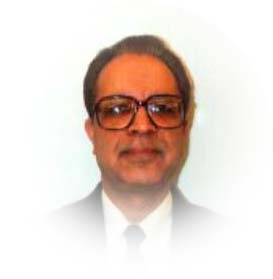The religious practices of Hindus of Kashmir (popularly known as Kashmiri Pandits) revolve around the worship of Shiva and Shakti. All other deities (gods and goddesses) of the traditional Hindu pantheon are worshipped as various manifestations of Shiva and Shakti. Shiva is the Supreme Lord of the universe and Shakti, the Universal Mother Goddess, is his eternal companion. Bhairavas and Ganas are also his divine companions and they are also worshipped with him on important festivals, such as Shivaratri. There are numerous Shiva shrines in Kashmir, such as Amareshvara, Vijayeshvara, Sureshvara, Harsheshvara, Mahaadeva, Bhuteshvara, Haramukheshvara. The shrines dedicated to Shakti are Tripurasundari, Trisandhyaa, Jvaalaamukhi, Shailaputri, Shaarikaa, Shaarada, Rajni, and Khirbhavaani.
Pandits) revolve around the worship of Shiva and Shakti. All other deities (gods and goddesses) of the traditional Hindu pantheon are worshipped as various manifestations of Shiva and Shakti. Shiva is the Supreme Lord of the universe and Shakti, the Universal Mother Goddess, is his eternal companion. Bhairavas and Ganas are also his divine companions and they are also worshipped with him on important festivals, such as Shivaratri. There are numerous Shiva shrines in Kashmir, such as Amareshvara, Vijayeshvara, Sureshvara, Harsheshvara, Mahaadeva, Bhuteshvara, Haramukheshvara. The shrines dedicated to Shakti are Tripurasundari, Trisandhyaa, Jvaalaamukhi, Shailaputri, Shaarikaa, Shaarada, Rajni, and Khirbhavaani.
The religious philosophy of Kashmiri Hindus is rooted in Kashmiri Shaivism, a school of Shiva philosophy that originated near Kailasha in Himalayas around 400 AD. The first teacher of this school was Tryambakaditya, a disciple of sage Durvasas. Sangamaditya, the sixteenth descendent in the line of Tryambakaditya, later settled in Kashmir valley around 800 AD. His fourth descendent, Somananda, extracted the principles of monistic Shiva philosophy from the scriptures and incorporated them in his own work, Shivadrishti, which is the first philosophical treatise on Kashmiri Shaivism. Later a galaxy of illumined sages, such as Vasugupta, Kallata, Utapaladeva, and Abinavagupta further refined this philosophy. The philosophy of Kashmiri Shaivism is generally called Trika Shastra, since it is a philosophy of the Triad: Shiva, Shakti, and Nara (the bound individual self). The literature of the Trika System of Kashmir comprises of three categories: the Agama Shastra, the Spanda Shastra, and the Pratyabhijna Shastra.
Kashmiri Shaivism, also known as Pratyabhijna (meaning "recognition") school of Shaivism, adopts a purely monistic metaphysical position. It considers the Supreme Lord, called Shiva or Maheshvara, as the Supreme Reality, which is innermost as well as transcendent. As a conscious and active principle, the individual self (atman) is identical with the Supreme Lord. Due to the influence of maya (ignorance) the individual self forgets its divine nature, becomes liable to limitation and bondage, and thinks itself to be different from the Supreme Lord. Thus one's mukti (spiritual freedom) lies in one's clear recognition (Pratyabhijna) of one's identity with the Supreme Lord. In Kashmiri Shaivism we find a type of religious thought which synthesizes pluralism, dualism, and the Buddhist doctrine of Shunya, and develops a nondualist philosophy which is sweet, sublime and constructive. This philosophy is closer to the theism of the Bhagvad Gita than to the nihilism of Buddha.
Kashmiri Shaivism is free from restrictions of caste, creed, and gender. Any devout aspirant can have access to both the theory and practice of this philosophy. In Kashmiri Shaivism, practice of religion is considered more important than theological debates and discussions. Kashmiri Shaivism does not advocate a life of renunciation (Sannyasahood) or profession of monks, but recommends an active householder's life with daily practice of worship, yoga and meditation. The use of outward symbols, such as yellow and orange robes, matted hair, and ashes are prohibited. Worldly enjoyment as a goal of worldly life is recognized and respected, but a spiritual path aimed at harmonizing bhukti (worldly enjoyment) and mukti (liberation) is advocated. Kashmiri Shaivism does not advocate suppression of one's emotions and instincts, but provides a spiritual path aimed at their sublimation towards the ultimate goal of spiritual freedom.

